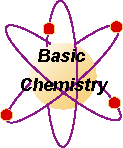Penny Equilibrium Lab
PURPOSE:
Many reactions are reversible. As products form they in turn react to produce reactants once again. Such reactions will establish a condition known as equilibrium. In this activity you will simulate a reaction that goes to equilibrium.
- To use forward and reverse reactions to place a reaction in equilibrium.
- To distinguish between the following terms: reactants, product, forward reaction rate, reverse reaction rate, equilibrium, and equilibrium constant.
PROCEDURE:
- Count out 100 pennies to be used by two people. One student called Reactant (R) will start with all the pennies and the other student called Product (P) will start with zero pennies.
Student (R) will keep their pennies "Heads up".
Student (P) will keep their pennies "Tails up". - At each reaction (transaction), student (R) will move 1/3 of their pennies in their possession to student (P). At the same time student (P) will move 1/4 of their pennies to student (R).
- Record data. Turn pennies according to direction 1. Repeat steps 2 and 3 until there are two consecutive forward and reverse reaction rates that are equal. This represents equilibrium.
- Do the experiment again using different rates (fractions).
ANALYSIS:
Construct graphs of concentration (number) of reactant and product vs time. Back to top

